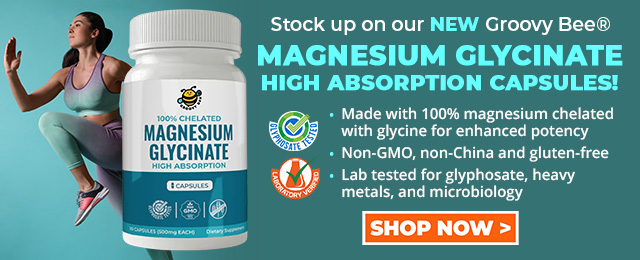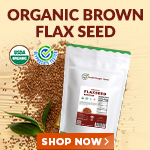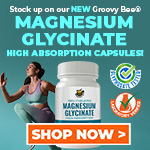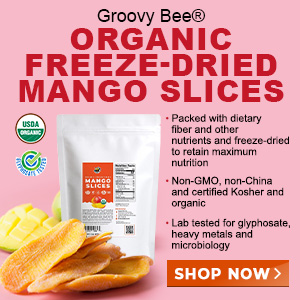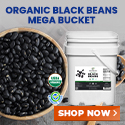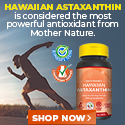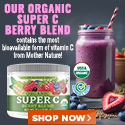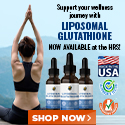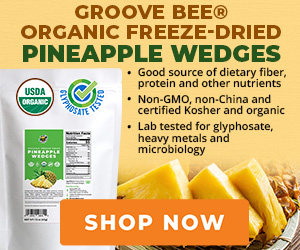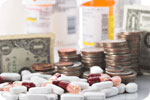
America spends billions on pharma drugs only to destroy them at additional cost
Monday, June 06, 2011 by: Daniel Erickson
Tags: pharma drugs, take back, health news
- Newly released JFK files reveal Pentagon's role in creating Lyme disease and covid in the same lab
- The hidden dangers in your kitchen: How cooking methods impact diabetes, cancer and aging
- DEADLY DECEPTION: How COVID vaccines increased mortality rates and why authorities hid the truth
- CDC finally halts $11 billion COVID funding scam as health officials admit the ‘pandemic’ was a fraud
- Arkansas embraces medical freedom with landmark ivermectin law
- Home gardening for preppers: A beginner's guide to growing your own food
- Lab leak confirmed? Boris Johnson's stunning reversal on COVID origins sparks global debate
- GAIN-OF-FUNCTION CAT-BIRD-FLU now on the rise as nearly a dozen cats in Colorado "test positive" for Bird Flu due to contaminated cat food
- Unraveling the paradox: Why intelligent individuals fall prey to everyday blunders
- Cartels shift tactics: Kidnappings and organ trafficking surge as border crossings plummet under Trump policies
- Why you should think twice before buying mainstream toothpaste formulas
- Was JFK's assassination orchestrated by a CIA double agent? New evidence points to James Angleton as the “architect”
- “Rent-a-womb” scandal: How China is exploiting U.S. birthright citizenship for long-term espionage
- Key nodes of Federal Government censorship
- Trump's greatest betrayal so far: Accelerating Middle East wars, silencing dissent, and serving Zionist masters
- ATTENTION PRESIDENT TRUMP: Please WITHDRAW your nomination of Dr. Susan Monarez for CDC Director as she is a VAX FANATIC and TOXIC JAB ZEALOT
- Record honeybee deaths devastate U.S. agriculture, pesticides under scrutiny
- Speaker Johnson warns Congress may defund or disband rogue courts targeting Trump
- Newly released JFK files reveal Pentagon's role in creating Lyme disease and covid in the same lab
- Elon Musk: Aliens could be here on Earth RIGHT NOW
- Festive flavors: The sweet history, nutritional profile and health benefits of pecan pie
- Trump reverses course on Gaza plan, says “nobody is expelling Palestinians”
- Reclaim your health: How midlife exercise reverses years of inactivity
- Big Pharma's $8 Billion bribery scheme exposed: how doctors are pushed to prescribe junk science, not heal
- Boys are back in town: Trump’s patriotic alpha crew takes the wheel while toxic females ride in the backseat
- EPA advisor admits the agency is funneling billions to climate groups ahead of Trump’s return to White House
- Space war brewing? Russia threatens to destroy Starlink satellites
- Survival 101: Effective EMF blocking techniques
- A lack of integrity in Academia: Harvard professor found GUILTY of fraudulent research to promote CRT theory
- Mike Adams Sermon 66: God will DESTROY ISRAEL for its wickedness
- 5 Simple steps to boost your brainpower: How to strengthen executive function in a distracted world
- Rep. Nancy Mace introduces bill to ban biological males from female facilities on federal property
- Sugarcane extract superior to cholesterol-lowering drugs?
- WHO focusing more on policing speech about public health and implementing global surveillance systems
- Pilots report mysterious lights 'moving at extreme speeds' across Oregon skies
- Dr. Mike Yeadon releases 15-minute testimony - WATCH - about genocidal intent of COVID “vaccines”
- EPA advisor admits the agency is funneling billions to climate groups ahead of Trump’s return to White House
- The Health Ranger releases “Vaccine Zombie” song and music video, using AI-animated zombies for the music video
- California's social media censorship law struck down: A victory for free speech or a threat to online safety?
- Dr. Mike Yeadon releases 15-minute testimony - WATCH - about genocidal intent of COVID “vaccines”
- The pandemic as a tool for INDOCTRINATION: Understanding “The Indoctrinated Brain” by Dr. Michael Nehls
- Florida takes a stand: DeSantis proposes permanent ban on mRNA vaccine mandates
- Mike Adams releases country western hit single: Goin’ Back in Time is Comin’ Home
- Mike Adams releases music poetry sensation: A Child of God
- “Why we influenced the 2020 elections”: Facebook files reveal the coordinated effort to bury the Hunter Biden laptop story
- RFK Jr. clears key hurdle: Sen. Susan Collins backs controversial HHS nominee, signaling a new era for health policy
- Unpacking the Lies That We’ve Been Fed – new song and music video released by Mike Adams, the Health Ranger
- Mike Adams releases new song and music video: Nothing More Disgusting Than a Globalist
- Newly released JFK files reveal Pentagon's role in creating Lyme disease and covid in the same lab
- Congratulations to the FULLY UNVACCINATED as you resisted the COVID-19 PROPAGANDA MACHINE fueled by over $100 BILLION
- Michigan sheriff announces criminal investigation into 2020 election crimes, Dominion Voting Systems
- Israeli soldiers accused of even more torture and abuse in the West Bank
- Migrants are taking advantage of recent hurricanes to scam residents and loot their homes
- House Intelligence Committee calls for the ARREST and PROSECUTION of Dr. Anthony Fauci
- Red Cross issues warning to stop blood plasma donations from vaccinated people
- Scientists confirm: GENIUS brain function can be spontaneously unleashed in humans without any apparent cause
- EPA advisor admits the agency is funneling billions to climate groups ahead of Trump’s return to White House
- HYSSOP: What research reveals about the health benefits of this ancient holy herb
- Two containers with completed ballots fall out of truck in Florida
- Fully vaccinated about to see “tsunami” of illness and death, warns virologist
- Global leaders unite to clamp down on “misinformation” with UN-backed Cascais Declaration
- BREAKING: 2025 NDAA authorizes mandatory military draft of WOMEN across America… as Pentagon pursues global NUCLEAR war with both Russia and China at the same time
- Michael Yon warns of a ZIONIST TAKEOVER in Trump’s second administration
- BOMBSHELL: DNA testing kits are a SCAM to develop ethnic-specific bioweapons
- Ozempic and Wegovy weight loss drugs are injectable LIZARD VENOM PEPTIDES that may unleash a devastating wave of organ failure… side effects align with symptoms of SNAKE BITES
- Israeli soldiers accused of even more torture and abuse in the West Bank
- These 13 countries just signed an agreement to engineer a global FAMINE by destroying food supply
- NASA admits that climate change occurs because of changes in Earth’s solar orbit, and NOT because of SUVs and fossil fuels
- RFK Jr. clears key hurdle: Sen. Susan Collins backs controversial HHS nominee, signaling a new era for health policy
- Sermon 30: How Jesus reveals Caesar’s FAKE CURRENCY and FALSE AUTHORITY
- Coriander seeds: Ancient medicine backed by modern science
- Arizona officials claim Maricopa County needs 10-13 days to tabulate results of the election
Perhaps taking a moment to understand how large 309 tons is, will help place the issue in perspective. 309 tons is roughly the weight of 7 or 8 fully grown humpback whales. In each ton, there are over 900,000 grams, and at least that number of pills or doses, which means that over 278 million pills were turned in. That means that for every person in the nation, one dose was turned in, either to be incinerated or buried. This weight was destroyed in two National Prescription Drug Take-Back events, on October 12 of last year and just over a month ago, on April 30.
Spearheading the initiative to give Americans a way to dispose of their unused prescriptions properly, the United States Drug Enforcement Administration sponsored two National Prescription Drug Take-back Days, one in October of 2010 and another in late April of this year. They reason that excess medications are contributing to the accelerating growth of drug addiction in the US. They focus on drug addiction as the problem and how they plan on solving it, but they never mention why so many excess drugs were purchased.
If just two days of effort, which have gone largely unnoticed by the media, were able to take in that significant a figure, you can bet that we harvested just the tip of the iceberg. In fact, there is every reason to believe that multiples of that figure are sitting behind medicine cabinets across the country. Even more have most likely been flushed down toilets, contaminating the water supply.
Still, health officials are excited by the turnout and optimistic about the effect programs of this type will have on health in the US. Administer of the United States Drug Enforcement Agency, Michael Leonhart, responding to the results of the second Take-Back day, said: "With the support and hard work of our local law enforcement and community partners, these events have not only dramatically reduced the risk of prescription drug diversion and abuse, but have also increased awareness of this critical public health issue."
According to the DEA and other authorities, the main reason for Take-Back programs in the US is spurred by the skyrocketing drug abuse in the country. According to the DEA, prescription drug abuse went up 13% from 2009 to 2010 and is expected to increase at a similar rate in 2011. It is clear that the war on drugs is quickly turning into a civil war, as Americans begin to find the purchase of legal substances easier and more appealing than buying imported 'goods.'
But while the DEA pats itself on the back, the sheer number of excess meds lying around in American homes also paints a dark picture of the American health system and begs the question: why do we have so many drugs lying around?
One could argue that people are asking for too many medications. If you flip that coin around, then you would say doctors are over prescribing. But the issue does not stop at the examination table. In fact, it is not a health issue at all. It is a business issue.
Remember the H1N1 scare in 2009, and how everyone was terrified that Swine Flu would claim thousands of lives? Plenty of doctors appeared on News channels to report the possibility of a massive outbreak and the consequent need for wide-scale vaccinations. Millions of doses were produced, and millions of dollars were given to the pharmaceutical companies manufacturing the vaccine.
When it turned out that the supposed outbreak would never happen, we were left with a stack of potentially harmful vaccinations. We then had to dispose of the surplus, roughly 40 million unused H1N1 doses, amounting to more than $260 million, wasted. These and other, similar, surfeit medications were not tallied in the 309-ton figure quoted above, by the way.
Giving citizens a proper means of drug disposal is certainly a great idea. The DEA emphasizes the impact that these medications have on American youth, as there are plenty of cases when children will sneak into their parents' medicine cabinet to take their pills. This behavior can lead to drug abuse, later in life.
Health Canada, which has had drug disposal programs in place since the 90s, takes a different stance, reporting on their website that improper disposal can pose health risks, due to contamination of the water supply.
With such a staggering number of doses of medications now in the safe keeping of either the atmosphere or deep US soil, one can see why health officials are optimistic. These pharmaceuticals have been swept cleanly, neatly, tidily under the rug.
Equally poignant is environmentally conscious response, which takes a step back to look at this pattern in the US, which indicates our vagrant consumerism is being taken advantage of, even in a place as intimate as the doctor's office. Why would we want to continue this unsustainable cycle, of creating more drugs than we need, just to spend more money, time, and effort to destroy them?
Sources:
(http://www.businessweek.com/lifestyle/conten...)
(http://www.npr.org/blogs/health/2010/07/01/1...)
(http://www.deadiversion.usdoj.gov/drug_dispo...)
(http://www.somdnews.com/article/20110527/NEW...)
(http://www.medicinenet.com/script/main/art.a...)
(http://www.hc-sc.gc.ca/hl-vs/iyh-vsv/med/dis...)
(http://www.catholic.org/business/story.php?i...)
Pharma drugs at FETCH.news
Get independent news alerts on natural cures, food lab tests, cannabis medicine, science, robotics, drones, privacy and more.
Take Action: Support Natural News by linking to this article from your website
Permalink to this article:
Embed article link: (copy HTML code below):
Reprinting this article:
Non-commercial use OK, cite NaturalNews.com with clickable link.
Follow Natural News on Facebook, Twitter, Google Plus, and Pinterest
Science News & Studies
Medicine News and Information
Food News & Studies
Health News & Studies
Herbs News & Information
Pollution News & Studies
Cancer News & Studies
Climate News & Studies
Survival News & Information
Gear News & Information
News covering technology, stocks, hackers, and more



"Big Tech and mainstream media are constantly trying to silence the independent voices that dare to bring you the truth about toxic food ingredients, dangerous medications and the failed, fraudulent science of the profit-driven medical establishment.
Email is one of the best ways to make sure you stay informed, without the censorship of the tech giants (Google, Apple, Facebook, Twitter, YouTube, etc.). Stay informed and you'll even likely learn information that may help save your own life."
–The Health Ranger, Mike Adams












